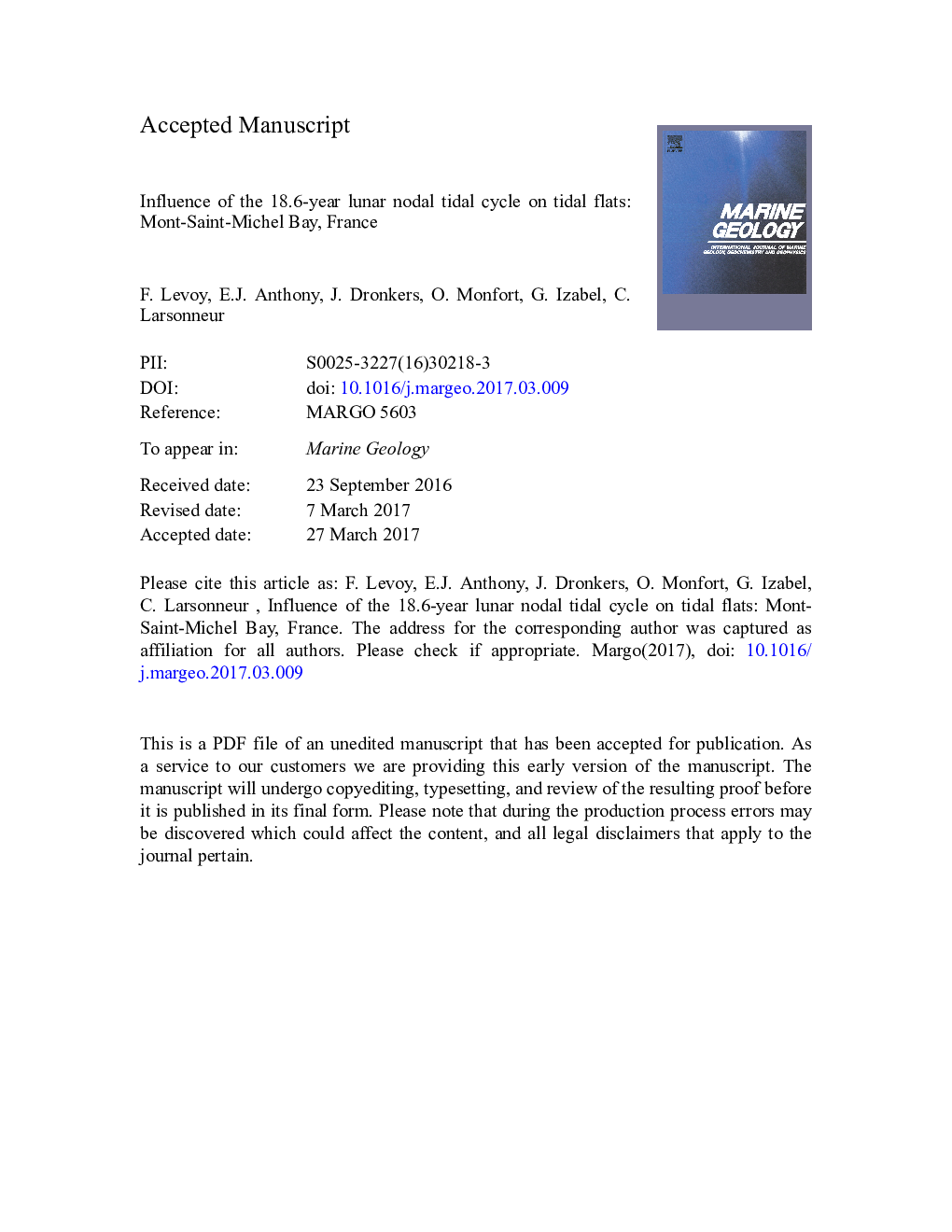| Article ID | Journal | Published Year | Pages | File Type |
|---|---|---|---|---|
| 5784533 | Marine Geology | 2017 | 24 Pages |
Abstract
The influence of the 18.6-year nodal tidal cycle on estuarine accretion, and indirectly on channel migration patterns, in Mont-Saint-Michel Bay, a UNESCO World Heritage Site famous for its monastery, is explored over three tidal cycles from a 68-year dataset that combines aerial photographs (1947-2007), one DGPS survey (1997), and nine LiDAR Digital Elevation Models (2002-2015). Sand-flat elevation and sediment-budget changes in this megatidal environment were further determined over the last nodal cycle using DGPS and LiDAR surveys. We infer that the changes observed are linked to variations in tidal prism and current velocities in this shallow, large tide-range setting. Increasing (rising tidal range) or decreasing (falling tidal range) flood-dominated asymmetry are deemed to lead, respectively, to waxing and waning of sediment import, in the form of large sand banks, into the bay over the 18.6-year nodal tidal cycle that, in turn, force channel migration. Coriolis acceleration and centrifugal forces are also considered to contribute to the observed channel migration.
Keywords
Related Topics
Physical Sciences and Engineering
Earth and Planetary Sciences
Geochemistry and Petrology
Authors
F. Levoy, E.J. Anthony, J. Dronkers, O. Monfort, G. Izabel, C. Larsonneur,
